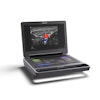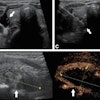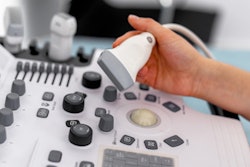Researchers are highlighting the success of a lateral approach water bath for ultrasonic imaging of the hand, their results being published November 15 in the American Journal of Emergency Medicine.
A team led by Jennifer Cotton, MD, from the University of Utah in Salt Lake City, found that its method resulted in images that were of higher quality, more consistency, and more clinical usefulness than those from traditional water bath imaging.
“Based on this it appears the lateral approach water bath is a valuable, feasible tool for high-quality ultrasound imaging of superficial structures in the hand,” Cotton and colleagues wrote.
Traditional water baths for ultrasound exams see the hand placed into a pan of water and from there, an ultrasound probe is submerged into the water. Despite improvements in imaging through this method, the researchers pointed out its drawbacks. These include pain or movement restrictions of the injured hand and the probe having to be held still in water to minimize motion artifacts.
Cotton's group highlighted that the lateral approach water bath method addresses these limitations by imaging through the side of a thin-walled plastic container without submerging the probe. They sought to compare the quality of ultrasound images generated using traditional and lateral approach water bath methods.
The researchers included 20 images from each method in their study, which were acquired from the same model and operator simultaneously. From there, two ultrasound fellowship-trained blinded reviewers rated the images for quality and adequacy for clinical decision-making on a five-point scale. A higher score indicated better quality and adequacy.
The team found that image quality and adequacy from the lateral water bath method produced ultrasound images that were significantly higher in quality and adequacy.
| Comparison of ultrasound images between lateral, traditional water baths | |||
|---|---|---|---|
| Traditional bath | Lateral bath | p-value | |
| Image quality | 2.6 | 4.2 | < 0.001 |
| Adequacy for clinical decision-making | 2.6 | 4 | < 0.001 |
The researchers also noted that the lateral bath had a smaller range for image quality, indicating greater consistency.
The study authors suggested that physics may play a key role in the advantages seen in the lateral bath, since this method stabilizes the probe against the exterior wall of the container, mitigating the risk of motion artifact.
And while imaging through an additional layer of material could reflect ultrasound beams and reduce image quality, the team highlighted that acoustic hindrance “is low enough in polypropylene that it appears to minimally impact image quality relative to the improved quality gained by minimizing motion artifact.”
Other advantages of the lateral bath method the authors highlighted included the cost of the container being less than a dollar, the container’s ready availability in most clinical settings, and needing no direct patient contact.
“Future studies could repeat this study in emergency department patients with pathology or within other specialties,” the authors wrote.
The full study can be found here.



















